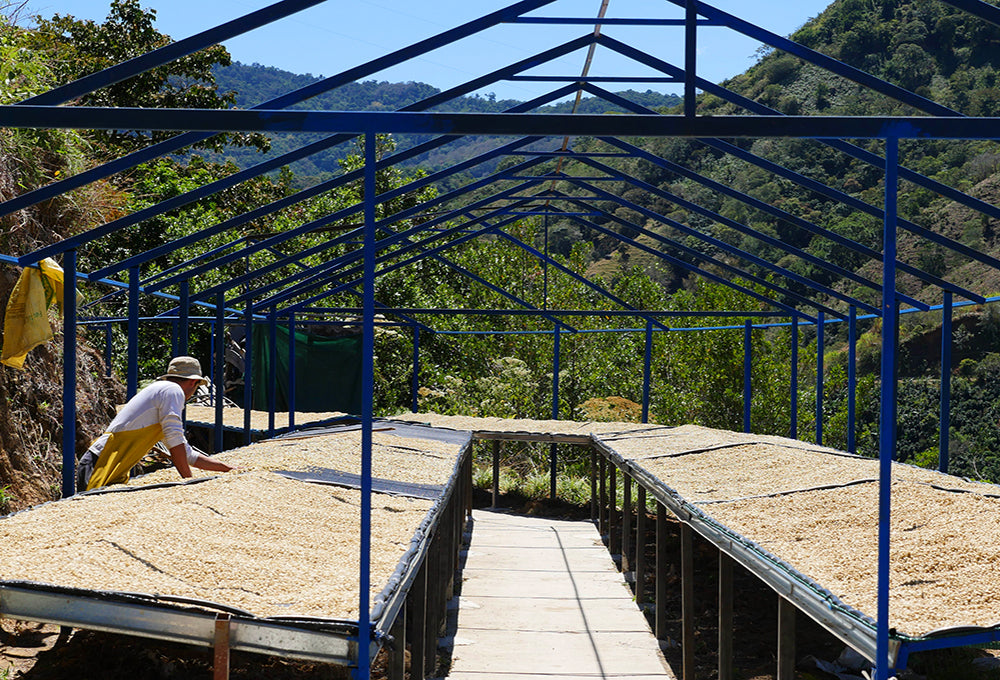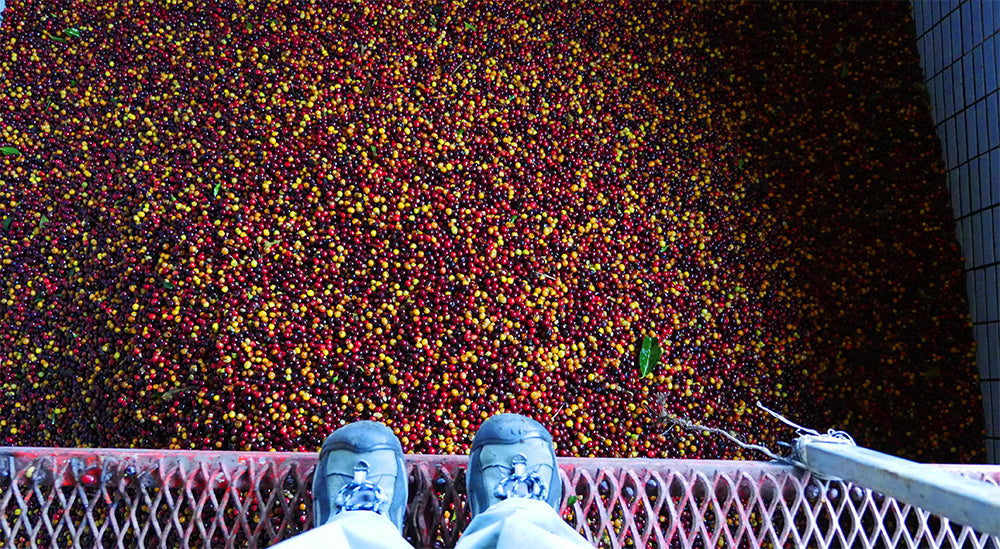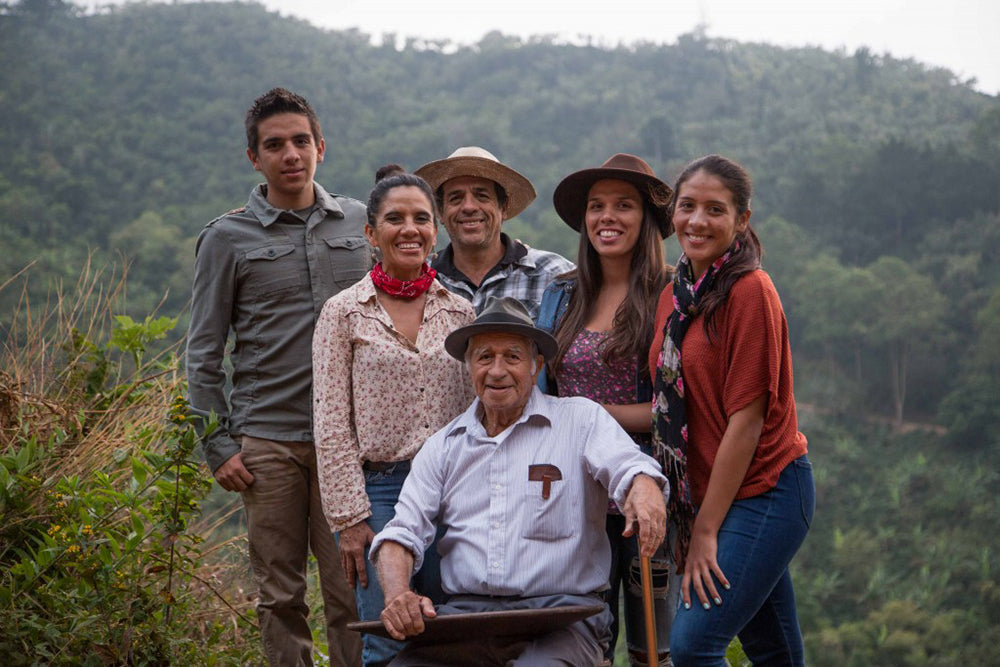Seed Peoples Market is back in Costa Rica with The Coffee Nomad!
Have you already read The Coffee Nomad's first post on traveling to Costa Rica?
Bienvenidos to Don Eli Coffee Farm - Costa Rica
SAN MARCOS DE TARRAZU, COSTA RICA
Have you ever visited one those places where you start missing it before you even left it?
Well, those were my exact sentiments when I first laid eyes on Nela’s home in Costa Rica.
The beautiful wooden home sits on a quiet street in their small town of El LLano de La Piedra. The guest house was added on after Carlos’ (farm owner) string of international guests became a regular event during the harvest season.


I quickly threw my luggage into my room and briefly met my new housemates. Carlos wanted to show me El Pastora, the highest point at Don Eli Farm, and the best time was during the days sunset.



It's here in these hills that Carlos sends his pickers at the end of the day to count the “cajuelas” - or standard unit of measurement for coffee cherries in Costa Rica. Many harvesters are indigenous natives from nearby countries like Panama.)


MICRO-MILLS
 (Drying beds at Don Eli Micro-Mill)
(Drying beds at Don Eli Micro-Mill)
A loud, abrupt knocking near my bedside window woke me up that first morning. It nearly gave me a heart attack. It was pitch black and I forgot that I was in freaking Costa Rica.
I whispered fiercely to my new roommates, a French and German couple, across the room, “What is that?!”
My roommate slurred, “It’s Carlos. For the micro-mill.”
 I sighed in relief. I was not under any fire or deadly combat. I then growled under my breath - I felt like I had just went to bed. Much like pulling off a band-aid, I yanked the covers off and stepped onto the wooden floors. I stumbled in the dark and became ever so grateful for my flashlight function on my iPhone. I threw on my comfiest clothing and hiking boots to begin my morning with Carlos at the micro-mill.
I sighed in relief. I was not under any fire or deadly combat. I then growled under my breath - I felt like I had just went to bed. Much like pulling off a band-aid, I yanked the covers off and stepped onto the wooden floors. I stumbled in the dark and became ever so grateful for my flashlight function on my iPhone. I threw on my comfiest clothing and hiking boots to begin my morning with Carlos at the micro-mill.
Their micro-mill sits just beyond the Monteros house. This is where the coffee magic happens.
A micro-mill is a small coffee farm that also has its own wet mill and processing on its farm.

And if there’s something that distinguishes Costa Rican coffee from other regions, it’s their micro-mills.
About 15 years ago there was a Micro-Mill Revolution in Costa Rica.
Before there were micro-mills, there were mega-mills controlling the entire coffee industry in Costa Rica. Producers would be shorted by large co-ops on coffee cherry counts. In these mega-mills, the carefully picked, higher-quality cherries would get mixed with low quality cherries. This left little incentive for coffee producers to perform their best and to motivate harvesters to pick the best cherries.

In operating a family-owned micro-mill, coffee producers can not only be selective in coffee cherries (being able to separate varietals or different types of coffee cherries, i.e. Typica from Caturra, etc.) but allow for experimentation with coffee processing.

It also allows the coffee producer to deal directly with coffee buyers. This is the best form of direct trade and fair trade there is. Often, the official certification for such labels are too expensive for coffee producers to afford. But we will get to that in our next post.
 (Left to Right: Jacob, Lucia, Carlos, Don Eli, Nela and Maria Jose) Photo from DonEliCoffee.com)
(Left to Right: Jacob, Lucia, Carlos, Don Eli, Nela and Maria Jose) Photo from DonEliCoffee.com)

The Don Eli Micromill is truly a family-operated mill. From Jacob (Nela’s brother) overseeing the de-pulping of beans, to Maria Jose (Nela’s younger sister) being meticulous with the drying process, it’s all Montero business.

I was pretty much like a fat kid in Willy Wonka’s chocolate factory. And Carlos was just as excited to give me the grand tour of the best micro-mill in town.
He would walk and talk at the same time while instructing someone to do more of this and more of that. He urged me to climb to the top of the wet mill or to help break apart dried up coffee cherries that were being “natural processed” (left in the sun to dry with their skins and pulp) leaving them sticky and practically glued together from their own sugary residue. I’d eventually go cherry-picking for a half a day and be pretty awful at it.

I had visited many micro-mills that all were as unique as the families that operated them. I had also made a quick visit to the CO-OP (or the COOPETERRAZU) a cooperative where coffee processing is done on a much larger scale. It was here that I learned that the Costa Rican coffee community is a tight-knit community. Everyone pretty much knows one another and they prefer it that way. Aside from personal relationships this includes the reputation of exporters as well as trading companies. If one exporter burned a producer, news would travel fast and the damage could be irreversible for their business.
It’s mind-blowing how much you can learn in such a short period of time - especially when your mornings and late nights are fueled by freshly brewed Costa Rican coffee.
In our next post we will discuss the “Tica” way of life (that may or may not include the best chicharrones in town), how Nela is changing the coffee-buying game, and what “Fair Trade” and “Organic Coffee” labels really mean to coffee producers.

It kind of makes you think twice about your average cup of Joe.
Until next time,
Mugs Up & Pura Vida,
The Coffee Nomad
Are you in need of some new coffee gear after reading this? Check out our latest collection of
fine coffee goods at SEED Peoples Market!



































 (Drying beds at Don Eli Micro-Mill)
(Drying beds at Don Eli Micro-Mill) I sighed in relief. I was not under any fire or deadly combat. I then growled under my breath - I felt like I had just went to bed. Much like pulling off a band-aid, I yanked the covers off and stepped onto the wooden floors. I stumbled in the dark and became ever so grateful for my flashlight function on my iPhone. I threw on my comfiest clothing and hiking boots to begin my morning with Carlos at the micro-mill.
I sighed in relief. I was not under any fire or deadly combat. I then growled under my breath - I felt like I had just went to bed. Much like pulling off a band-aid, I yanked the covers off and stepped onto the wooden floors. I stumbled in the dark and became ever so grateful for my flashlight function on my iPhone. I threw on my comfiest clothing and hiking boots to begin my morning with Carlos at the micro-mill. 


 (Left to Right: Jacob, Lucia, Carlos, Don Eli, Nela and Maria Jose) Photo from
(Left to Right: Jacob, Lucia, Carlos, Don Eli, Nela and Maria Jose) Photo from 


